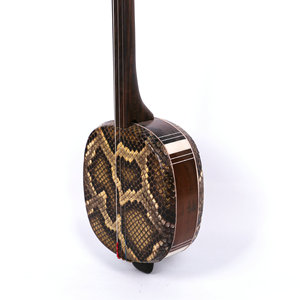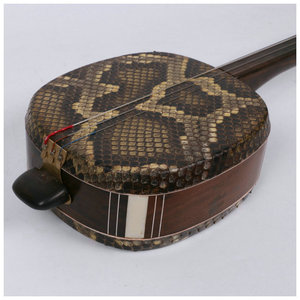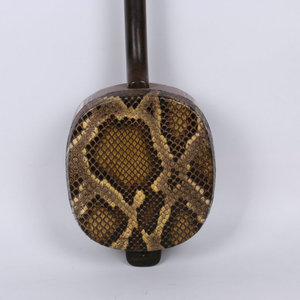(1263 products available)





































































































































































































There are many different kinds of big string instruments, and each has its own unique sound and playing style. Here are some of the most popular types:
Bass
The bass is a large string instrument that is played with a bow. It is the lowest-pitched member of the violin family and is an essential part of orchestras and jazz bands. The bass has a deep, rich sound that adds depth and warmth to music. It is also used in rock and blues music, where it provides the rhythmic foundation.
Cello
Cello is a large string instrument that is played with a bow. It has a deep, warm sound that is lower than the violin and viola but higher than the double bass. The cello is an essential part of orchestras, chamber music ensembles, and string quartets. It is also used in solo performances and as a accompaniment instrument in many styles of music, ranging from classical to jazz to folk.
Guitar
Guitars are large string instruments with different sizes and shapes. The standard guitar has six strings, but there are also 12-string guitars and bass guitars with four to six strings. Guitars can be played with a pick or fingers and are used in almost every music genre, from rock to jazz to classical.
Harp
The harp is a large string instrument played by plucking the strings with the fingers. It is a beautiful and elegant instrument, often associated with classical and Celtic music. The harp has a range of three to four octaves, and its sound is sweet and ethereal. It is used in orchestras, chamber music, and as a solo instrument.
Ukulele
The ukulele is a small, string instrument that is often mistaken for a toy. It has four strings and is played by strumming or plucking. Despite its small size, the ukulele has a bright, cheerful sound that is used in many music genres, from Hawaiian to jazz to pop.
In addition to their usage in orchestras and bands, large string instruments are also utilized in other contexts.
Solo performances
Big string instruments are used in solo performances, where they can showcase the expressive sound and technical capabilities of a single instrument. Soloists can perform concertos and unaccompanied works, demonstrating their skill and the instrument's unique character.
Chamber music
Big string instruments are used in chamber music ensembles, such as string quartets, quintets, and other combinations. They add depth and richness to the ensemble, providing harmonic support and melodic lines.
Film and television scoring
Big string instruments are used in film and television scoring to create emotional and dramatic soundtracks. They can evoke a range of emotions, from sadness and nostalgia to tension and suspense.
Video game music
Big string instruments are used in video game music to create immersive and emotional soundtracks. They can enhance the gaming experience by providing tension, excitement, and emotional depth.
Contemporary and experimental music
Big string instruments are used in contemporary and experimental music, where composers explore new techniques and sounds. These instruments are used in combination with electronics and other instruments, pushing the boundaries of traditional music.
Educational settings
Big string instruments are used in music education, where students learn to play and appreciate these instruments. They are also used in ensemble settings, where students can experience playing with larger ensembles and orchestras.
Follow the factors below as a guide when selecting a string instrument:
The level of experience of the buyer will determine the kind of instrument they settle on. Those looking for instruments for beginners will opt for models that are easy to learn and play. For instance, when buying a guitar, one will go for an acoustic guitar because it is easy to carry around, and the learner does not need to know how to maintain an electric one. More experienced players will go for instruments that offer a wide range of sound and quality, such as electric guitars or bass guitars.
Money will play a significant role in determining the kind of instrument bought. More expensive instruments cost more because they offer better quality and sound than cheaper ones. However, one must be careful to avoid scams and ensure that they get a good-quality instrument within their price range. This means that the instrument should be well constructed, with no visible defects or signs of poor craftsmanship.
The size of the instrument is essential, especially for string instruments played on the shoulder, such as the guitar or cello. The player should be able to hold and play the instrument comfortably. This means that one should be able to reach the neck and body of the instrument easily and rest it on their leg or against their body without any strain.
Before buying a string instrument, it is essential to know its maintenance and care requirements. For example, polished wood instruments must be kept in a protective case when not being played to shield them from dust and humidity. This means that the player should be ready to make this investment to maintain the instrument's quality and sound.
These broad categories encompass the different elements and aspects of some of the world's most popular big string musical instruments.
These instruments are designed to produce sound through their strings. When the strings are plucked, rubbed, or struck, they vibrate to produce music. The larger the string, the deeper and more resonant the sound. All these instruments are meant to create music that can range from simple tunes to the most complex musical pieces. Some, like the violin family, are mostly used for orchestral music, while others, like the guitar, are meant for more contemporary and popular music.
Big string instruments are designed to be proportionate to their range. The bigger the instrument, the lower the pitch. The guitar has its six strings, while the double bass has four thicker and longer strings. The violin family is designed so that each instrument has a different pitch range and can play music from the lowest bass notes to the highest treble notes.
Q1. What are the advantages of large string instruments over smaller ones?
A1. Because of their larger bodies, big string instruments have a deeper, richer tone that is more full-bodied. Their tonal quality is superior and more nuanced. The larger hands allow musicians to play more complex sound and enjoy better sound clarity.
Q2. Are all big string instruments played with a bow?
A2. Not all big string instruments are played with a bow; some are played with a plectrum or picked with the fingers, while others are played with hand techniques. For instance, the double bass and cello are played with a bow, the guitar is played with a plectrum, and the harp is played with hand techniques.
Q3. What are the tuning techniques used on big string instruments?
A3. The big string instruments are usually tuned using a fine-tuning pegs or knobs, which helps to ensure that the instrument produces the correct notes. Most big string instruments are tuned using the fifth interval tuning method, which involves using the tuning pegs on the neck of the instrument.
Q4. How does one maintain big string instruments?
A4. To maintain big string instruments, wipe the strings and body of the instrument with a soft cloth to remove any dirt or sweat, use a string cleaner or conditioner, store the instrument in a case, keep it in a stable environment, and regularly check and change the strings.
Q5. Can one play big string instruments if they are not big?
A5. Yes, people of all sizes can play big string instruments. However, one may require additional support, such as a smaller stool or chair, to help them manage the instrument better.